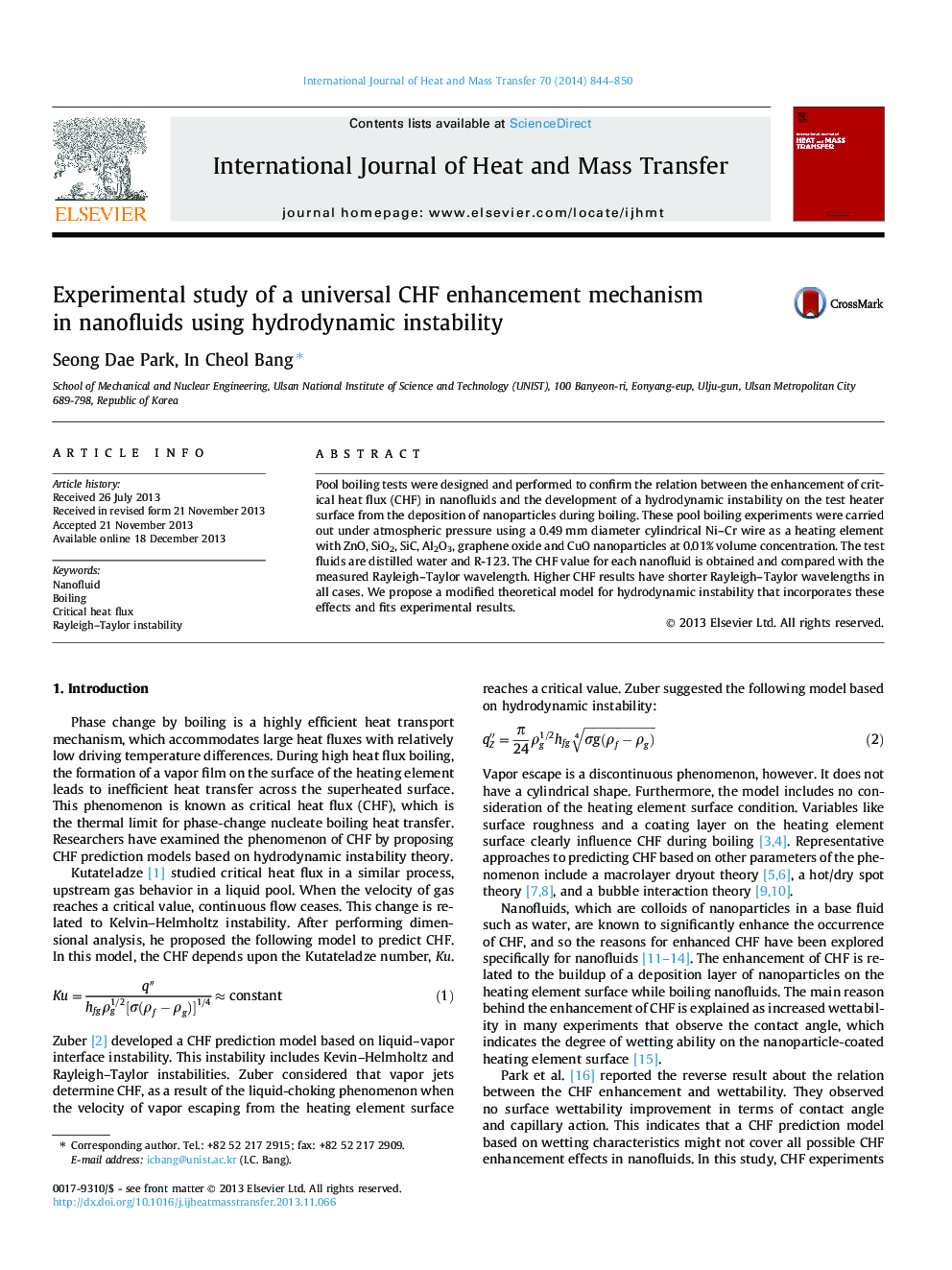| Article ID | Journal | Published Year | Pages | File Type |
|---|---|---|---|---|
| 657648 | International Journal of Heat and Mass Transfer | 2014 | 7 Pages |
Pool boiling tests were designed and performed to confirm the relation between the enhancement of critical heat flux (CHF) in nanofluids and the development of a hydrodynamic instability on the test heater surface from the deposition of nanoparticles during boiling. These pool boiling experiments were carried out under atmospheric pressure using a 0.49 mm diameter cylindrical Ni–Cr wire as a heating element with ZnO, SiO2, SiC, Al2O3, graphene oxide and CuO nanoparticles at 0.01% volume concentration. The test fluids are distilled water and R-123. The CHF value for each nanofluid is obtained and compared with the measured Rayleigh–Taylor wavelength. Higher CHF results have shorter Rayleigh–Taylor wavelengths in all cases. We propose a modified theoretical model for hydrodynamic instability that incorporates these effects and fits experimental results.
